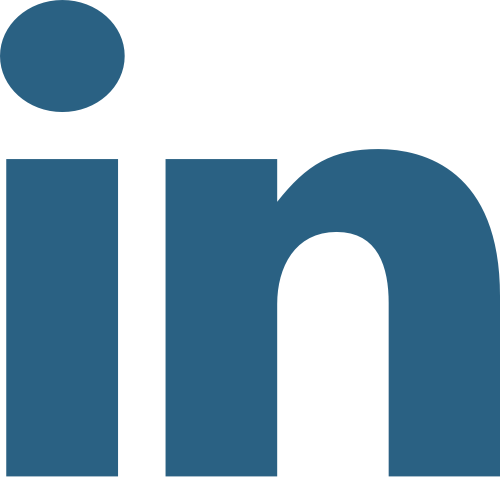
4 useful decision making techniques from the audiobook Decisive
Paolo Bongiovanni15 Dec 23
Table of contents
Decisive the audiobook
Audiobook title: Decisive
Authors: Chip and Dan Heath
Listening time: 9 hours
Concentration level required: Ok while driving on the motorway
Content rating: 8 / 10
Narration rating: 8 / 10
Decisive is a book about decision-making in your personal and professional life. It describes four enemies of good decision-making, and it introduces a decision-making process that can make you choose better options - on aggregate.
I found it commendable that the authors say that not all decisions will turn out to be good or great. Decisions are hard because the outcomes cannot be known beforehand. They argue that you can make decisions more robust and have them turn out positive more often. Also, when decisions turn out bad, you can be better prepared to face the consequences.
It was a pleasant listening experience, that took place during a week-long holiday in Belgium. I ended up driving my son around in the evenings to keep him soothed, and the slightly droney voice worked a treat to keep him nice and calm and I entertained. Even at ten years old, the book still gives good advice, so I rate the audiobook a worthwhile purchase.
In this article I won't look in depth at the contents of the book, which are nicely summarised in this summary of the Decisive book by Sam T Davies.
I will focus on a few of the techniques mentioned in the book that I used in the last few months, sometimes in contexts that had nothing to do with decision-making, and give you practical examples of how I employed them.
Multitrack
Multitracking is about not only having mutually exclusive options. It means running with multiple options before committing to one or more winners.
The example made in Decisive is about a design brief that asked designers to come up with 3 different designs. The designers would undergo two rounds of critique on all three of the designs at the same time, and they would refine all three designs before the following round. Traditionally, each designer works on a single design and iterates on it after receiving feedback.
As a result of multitracking, the designers were less inclined to get attached to one of their designs and were able to receive feedback as a critique of the design as opposed to a critique of them as designers.
Multitracking is useful when facing decisions that meet some of the following conditions:
- The options you can decide on are many, each of them coming with a considerable cost in terms of time and resources.
- There is little information that can guide you in determining which option is good without, exploring each option in some depth.
- The cost of running an exploration on multiple options is less than the cost of picking a bad option, or the cost can be absorbed and is negligible compared to the windfall of picking a good option.
Multitracking in Product strategy
About a month ago I started wondering if I should keep focusing on Mindiply Timeline, a project timeline tool, integrate the decision-making app Mindiply Decido into Mindiply Timeline, or revive the brainstorming platform Neonce.
The reason I started to wonder is that I have content, on the Mindiply website, about both decision-making and creativity that receives regular organic traffic from search engines, but there is no relevant product I can offer!
In the end, I decided to alternate focus between the three products, giving most of my attention to Mindiply Timeline, but also reserving some time for the other two products.
There is an obvious opportunity cost by not focusing only on one product. That's why I also set up tripwires - see below - that will change my decision in the future under certain conditions.
Multitracking in content marketing
After reviewing the results of three months of SEO efforts, I was wondering whether to keep focusing on top keywords that have to do with project timelines or try a different approach.
This new approach would reach project managers indirectly, by attracting readers like you, who are interested in techniques that make the most of our wonderful brains. Some of you will be project managers, and you may be tempted to explore the project management products we provide, given our approach to thinking sounds sensible and resonates with you. Well, that's our reasoning behind the approach, time will tell if the reasoning corresponds to reality.
This new approach will not completely replace the previous SEO approach of targeting project management keywords. We will alternate posts of the two types, often cross-linking them, switching between a project management focus and the wider world of ideas and thinking techniques.
Multitracking in exploring niche markets
A mantra that all startup advisors give to startup owners is to find a niche, so you can talk a language that resonates with a specific public. We've been less than stellar at this in the past. At the moment we are exploring niches where Mindiply Timeline provides the most benefit to our users, and we are planning to keep testing at least two or three niches at a time until we detect a strong signal of interest from one or more of them.
We already identified two segments that we will explore more in-depth - small biotech firms at the forefront of research, and small independent gaming companies.
Try it out - (Called Ooch in Decisive)
You face a decision where uncertainty is very high. There are many options, but there is little information available to determine the likelihood that any of them is better than the other.
One of the examples given in Decisive is about a high school student who is thinking of studying pharmacy at university. He chooses to do an internship at a pharmacy for a few weeks, to get an idea of what being a pharmacist looks like from the inside.
Ooch product ideas
In the startup world, we run experiments on the product ideas we come up with. We create, as quickly and cheaply as possible, testable proof of concepts of these ideas.
We then beg our potential future users to look at these proofs of concept and tell us what they think. In our hopeful minds, we hope for someone to beg us to give them the finished thing, money no object. So far that specific fantasy has not materialised yet, but I'm still hopeful - there is still a little bit of Candide in me.
⚠️ Do what I say, not what I do
Definitions of quick and cheap may differ. In our case, three years to create an MVP is the definition. Most would disagree. We would disagree too, if it was not about us. We thought we would have been done in three months, originally. Look at tripwires and assumptions further down.
Experiments as ooching
Another form of ooch is to run cheap experiments to determine what works better. I do that regularly in all my communications. At the time of writing, I'm validating Mindiply Timeline by running MVP interviews with project managers. I reach out to them by using LinkedIn. The initial message I send out is now in its 7th iteration. The gist and tone have not changed since version one, but it is still surprising to me how the length and wording have such a significant effect on how many kind people reply to me. For each iteration, I have two slightly different versions of the same message, and the following iteration is born from the previous iterations and specific versions that had the better impact.
10 x 10 x 10
The 10 x 10 x 10 technique is a thought experiment that asks you to look at the decision you're taking and imagine how you will feel 10 minutes after you make the decision. Then how you will feel 10 months after taking it. And then how you will feel 10 years after taking it. Notice that after 10 months and most probably after 10 years the outcomes of the decision will have been known, so it's worthwhile imagining how you will feel if the decision will have turned out to be positive, and how you will feel if it will have turned out negative.
This technique is useful when the decision you are facing triggers your emotions and is important enough that you want the effect of those emotions to be reduced. The Heath brothers point out that you don't want to negate your emotions, but make certain they don't blind you altogether to obvious aspects, opportunities or risks that you would notice with a clearer, calmer mind.
I ended up using this technique fairly often in the last few months:
10 x 10 x 10 and startup strategy
About a month ago I found myself wondering what to focus on next with Mindiply, once I realised that tackling project management SEO on my own is unrealistic for now. Self-doubt, a perennial companion of most startup founders, was gnawing at my resolve. Enter the 10 x 10 x 10. Say that things go badly, and, in a few years, I close Mindiply. How will I feel 10 minutes after that? In shock. 10 months after? I will probably be hyper-focused and buzzing from whatever new adventure I have embarked on. 10 years after? I will have integrated the disappointment of Mindiply not flourishing into my life narrative as an important learning experience and as a bridge between my younger and mature years. That simple thought exercise allowed me to calm down and look for what I can work on instead, hence my decision to focus SEO not directly on project management but on ideas, thinking, and interesting books - things where I can rank higher with an amount of effort I can afford to commit.
10 x 10 x 10 and Disagreement with my personal trainer
This is a personal one, but it highlights the versatility of the 10x10x10 technique. In the last few years, things have been a bit difficult at a personal level, and my biweekly gym sessions have been a positive counterpoint to the other challenges I faced. Unfortunately, my personal trainer and I came to see things differently about the terms and conditions of our relationship, and my emotions flared up significantly because of how attached I've grown to our workouts. With the 10x10x10 I managed to work out how I would have felt with both continuing and stopping our relationship, and I've been able to have positive discussions with him, even with emotions making themselves felt during those discussions. We managed to find a good balance between our different points of view, and I'm happy to say I still go and give my best twice a week.
What would your successor do?
This technique tries to help you change perspective and save you from the tunnel vision we tend to develop when we have invested time and effort in something.
The example in the book comes from the CEO and CTO at Intel in the early 1980s wondering whether to go for the microprocessor business or stick to their traditional business of making memory chips.
We know how things turned out, now, but when they were faced with that decision there was no certainty. After a lot, a lot of thinking, they ended up asking themselves: "What would our successors do?". Ditching the underperforming memory business and focusing on the promising microprocessors business was the answer.
It's a great anecdote, and I tried applying the method to my own business, but with less success. The risk of this technique, especially if you are in a period of self-doubt, is that it will cause you to be overly pessimistic, bash yourself and trash everything you have done so far.
Having said that, I keep it in mind because I'm sure it will turn out to be useful at some point.
Set a tripwire
You've made a decision. Great. How do you work out if it is turning out well or not? How can you make sure you change route, if the outcome is not quite what you expected? That's when you set a tripwire. You determine a set of conditions, that, if met, suggests you stop and review where things are going.
A fun example given in Decisive is about a rock band whose singer is known to go berserk if, in the backstage of their shows, he finds a bowl of M&Ms that includes any blue ones. It makes for newsworthy notoriety, but, more importantly, it works for the band as a warning system. The firm that is preparing the band's stage is supposed to follow to the letter their very, very detailed contract to set up the stage as the bad wants. The bowl of M&Ms with no blue ones in it is mentioned in the middle of the lengthy contract.
If the company setting up the stage overlooks the bowl of M&Ms, the band suspects that other parts of the contract may have been taken lightly as well.
Tripwires for startup strategy
In my life as a founder, I've set up tripwires in the form of quarterly checkpoints. At the start of the quarter, based on my current strategic direction, I set a few criteria that warn me if that direction is the wrong one.
My two main goals for Q4 2023 were:
- Improve my SEO positioning with keywords related to project timelines. I set up a target goal of 20 trials per week, coming from 200 landings to web pages that are related to project management. So, from an SEO perspective, I was expecting to get 200 clicks from Google every week. The results have been much less than that, hovering around 35 weekly clicks in the middle of December 2023. This has brought me to reconsider how to approach SEO for next quarter - I'll keep you posted.
- Conduct MVP interviews to validate the Mindiply Timeline product, and also identify which group of project managers reacted the best to it. My target was to conduct 30 interviews by the end of 2023. I've had 5 so far with two more scheduled, but I have fired only positive tripwires here. Each interview has been extremely valuable in terms of learning about what is good and what is less so in Mindiply Timeline, I met some wonderful persons who took their precious time to talk with a stranger, and, with a couple of these interviewees, I'm building a longer lasting working relationship.
As an additional note, I've found it very useful to write down the assumptions that underline the target numbers of the objectives I've set. In terms of SEO I focused on keywords that Ahrefs and I thought were going to be easy targets. Reality happened. Mindiply's domain rating, compared to the very well-established players in the project management market, is low. It means that the decent articles I wrote - well I hope they are decent! - won't rank high until I manage to increase the domain rating to begin with. But to increase the domain rating you need backlinks, and no one will know about those decent articles if I don't rank - snake eating its tail and all of that.
The tripwire fired, and I'm in the process of setting a new direction, new targets and new assumptions for Q1 2024. The fundamental target of a regular flow of product trials has not changed, but how I try to get there has.







